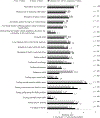Caregiver strain among North American parents of children from the Autism Treatment Network Registry Call-Back Study
- PMID: 34657479
- PMCID: PMC9012781
- DOI: 10.1177/13623613211052108
Caregiver strain among North American parents of children from the Autism Treatment Network Registry Call-Back Study
Abstract
Caregiver strain is the adverse impact that parents of children with emotional and behavioral issues including autism often experience (e.g. negative consequences of caregiving such as financial strain and social isolation; negative feelings that are internal to the caregiver such as worry and guilt; and negative feelings directed toward the child such as anger or resentment). This study showed that on average caregiver strain did not significantly change in North American parents of children with autism during a 2-year period. Improved caregiver strain was linked to improved child functioning and behavior. Routine assessment of caregiver strain and referral to evidence-based programming and supports may help alleviate some of the burden that families of children with autism commonly experience.
Keywords: North America; adaptive functioning; autism; caregiver strain; parents.
Figures

References
-
- Achenbach TM, & Ruffle TM (2000). The Child Behavior Checklist and related forms for assessing behavioral/emotional problems and competencies. Pediatric Review, 21, 265–271. - PubMed
-
- Altiere M, & von Kluge S (2009). Searching for acceptance: Challenges encountered while raising a child with autism. Journal of Intellectual & Developmental Disability, 34(2), 142–152. - PubMed
-
- American Psychiatric Association. (2013). Diagnostic and Statistical Manual of Mental Disorders (Fifth Edition). American Psychiatric Association.
-
- American Psychiatric Association (APA). (2000). Diagnostic and Statistical Manual of Mental Disorders (DSM-IV-TR) (4th Edition Text revision). APA.

